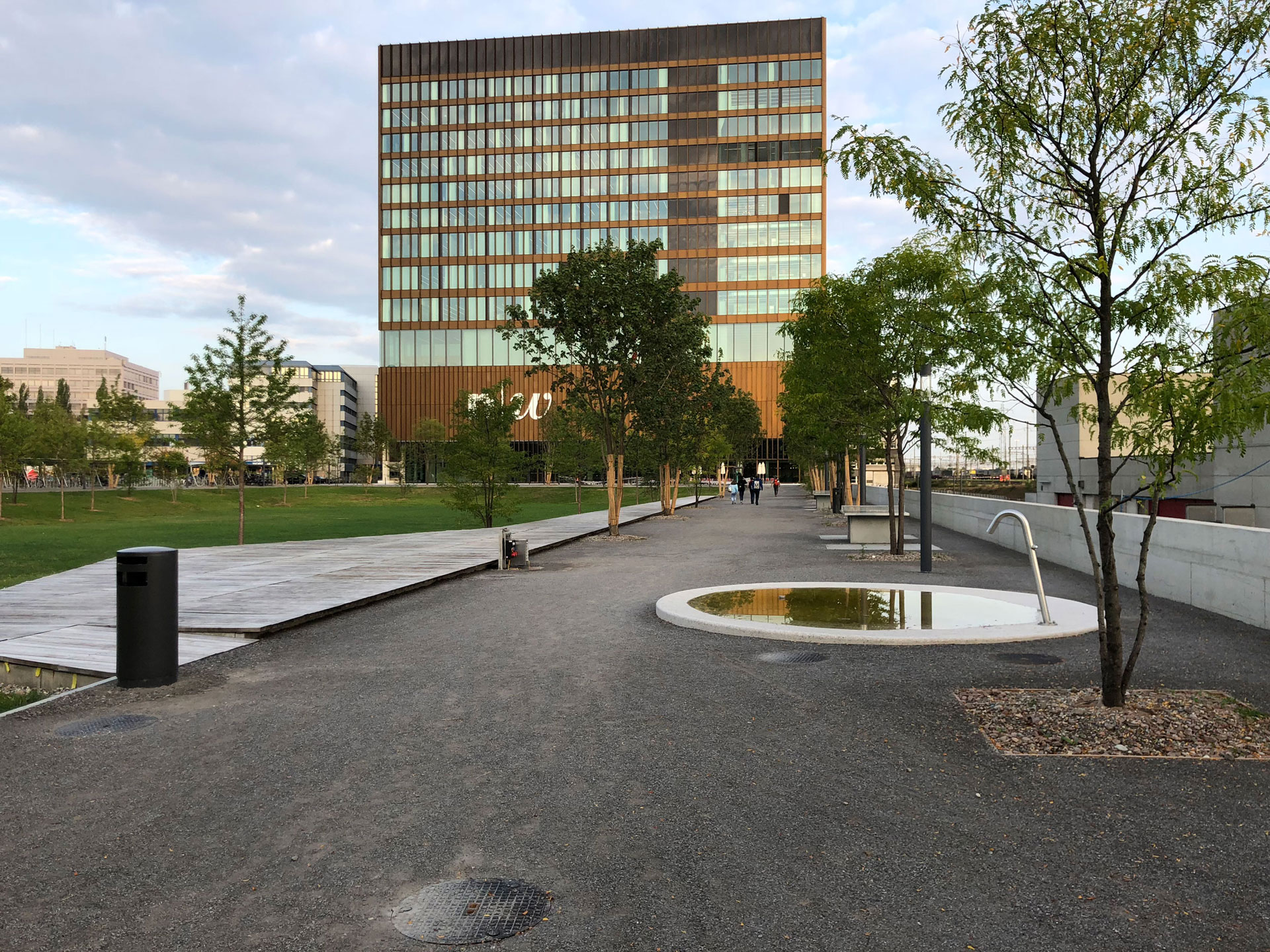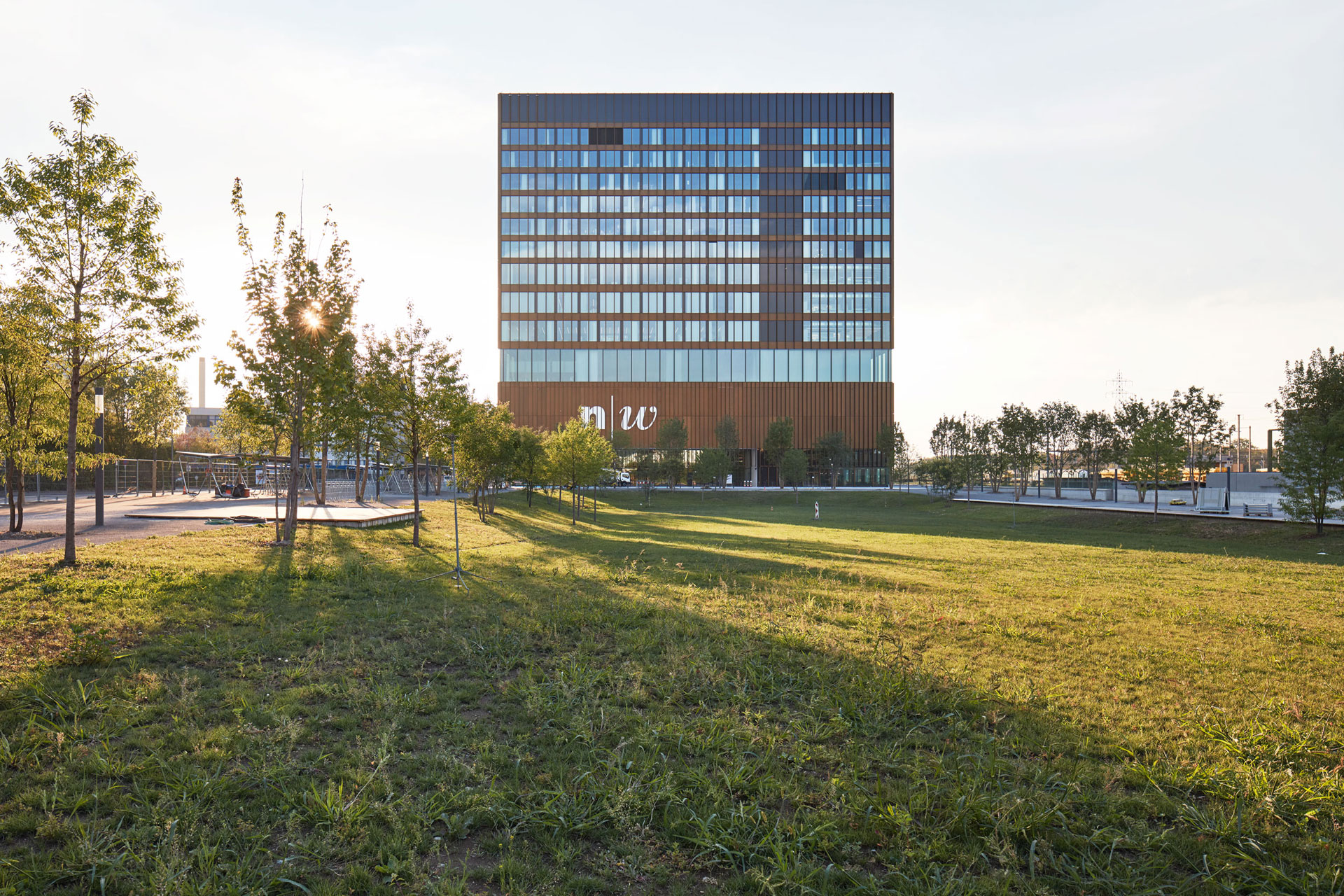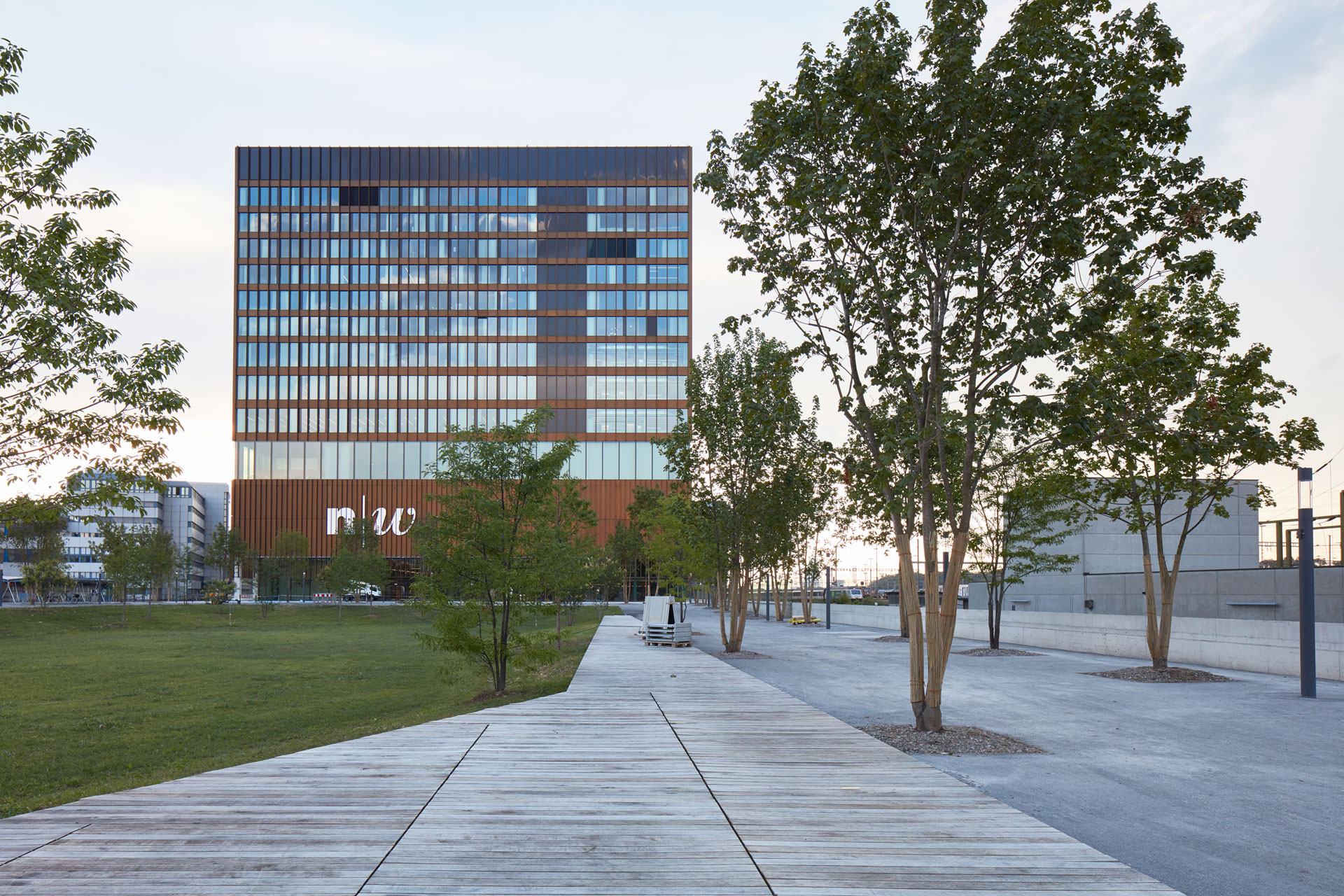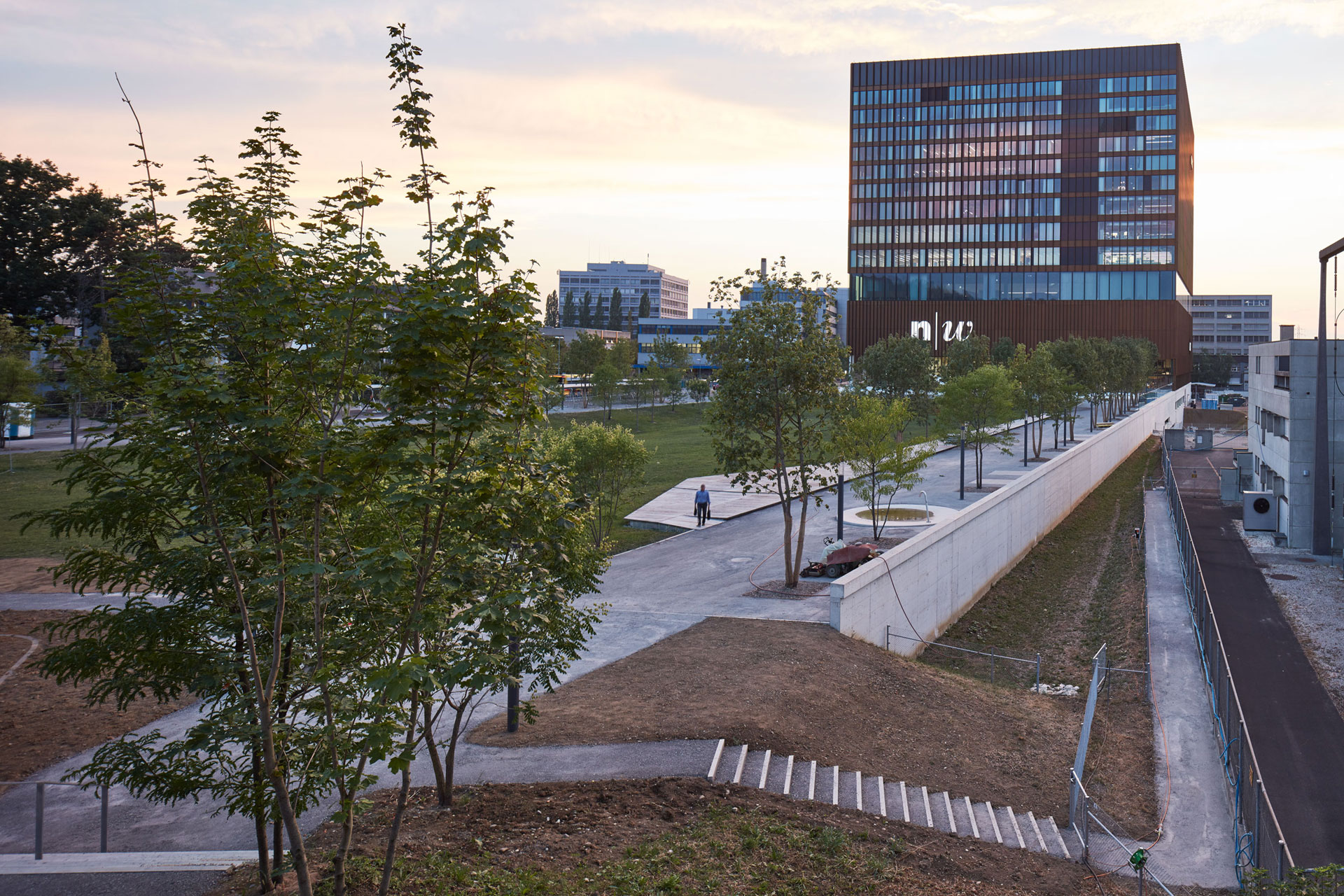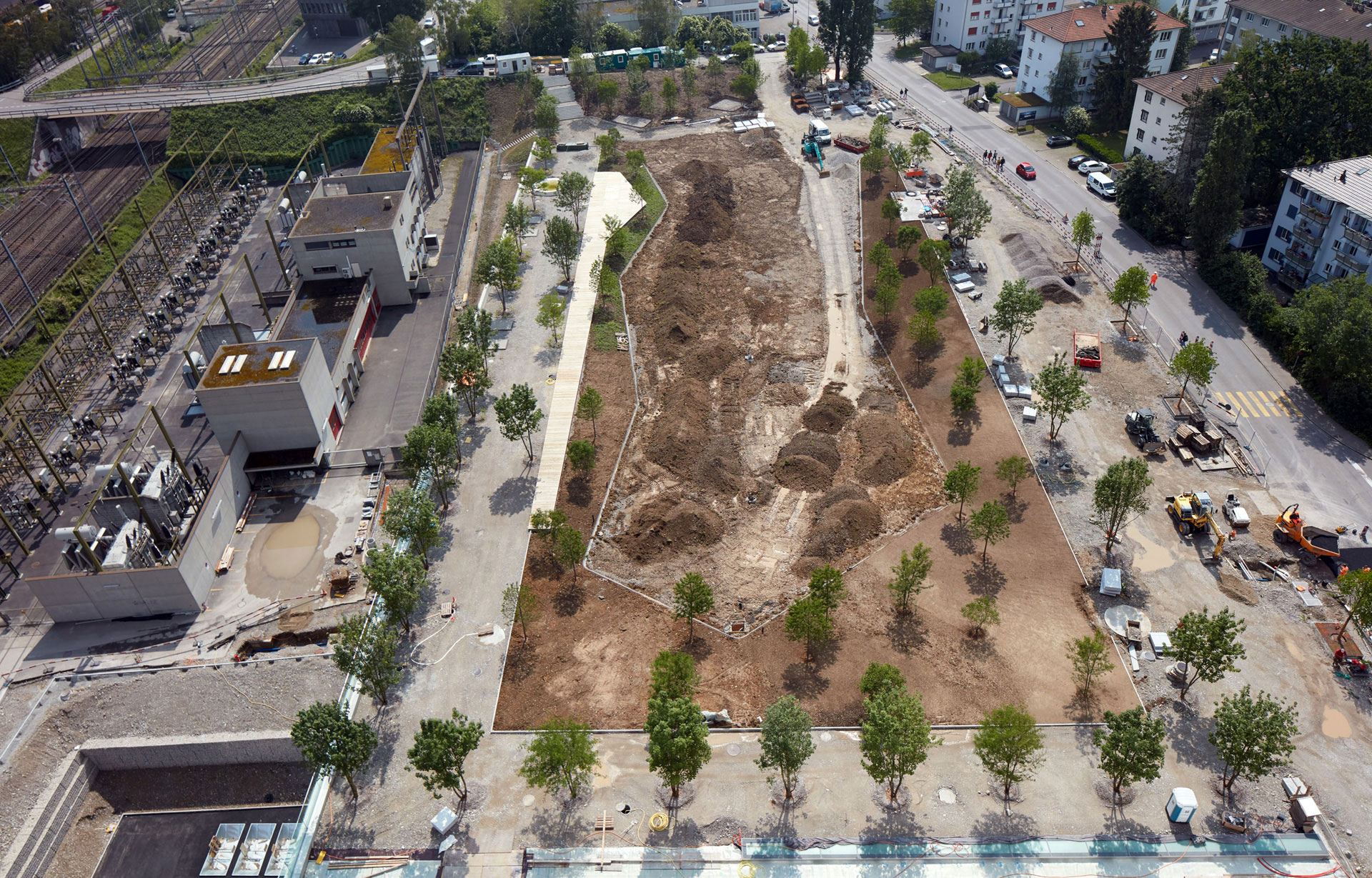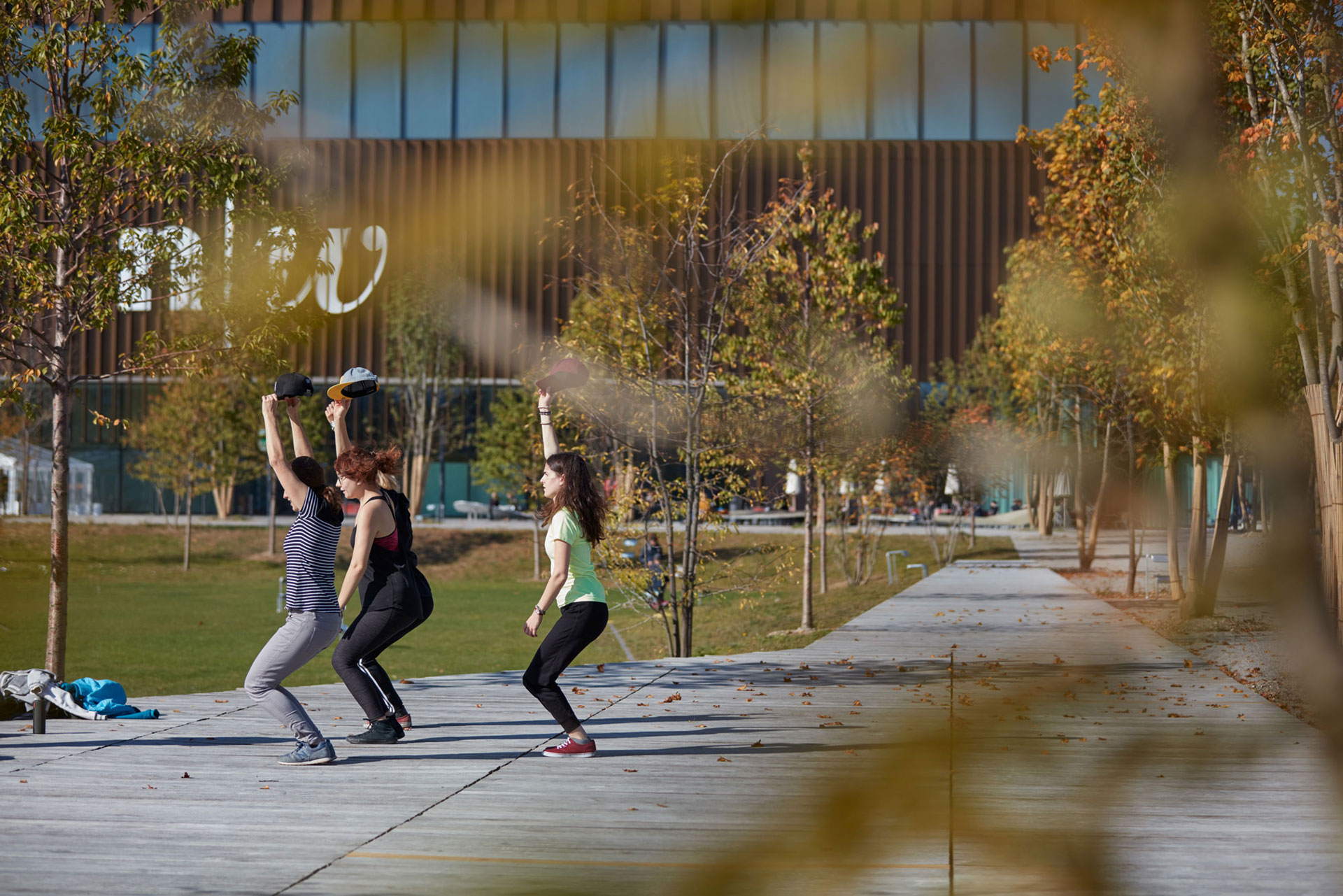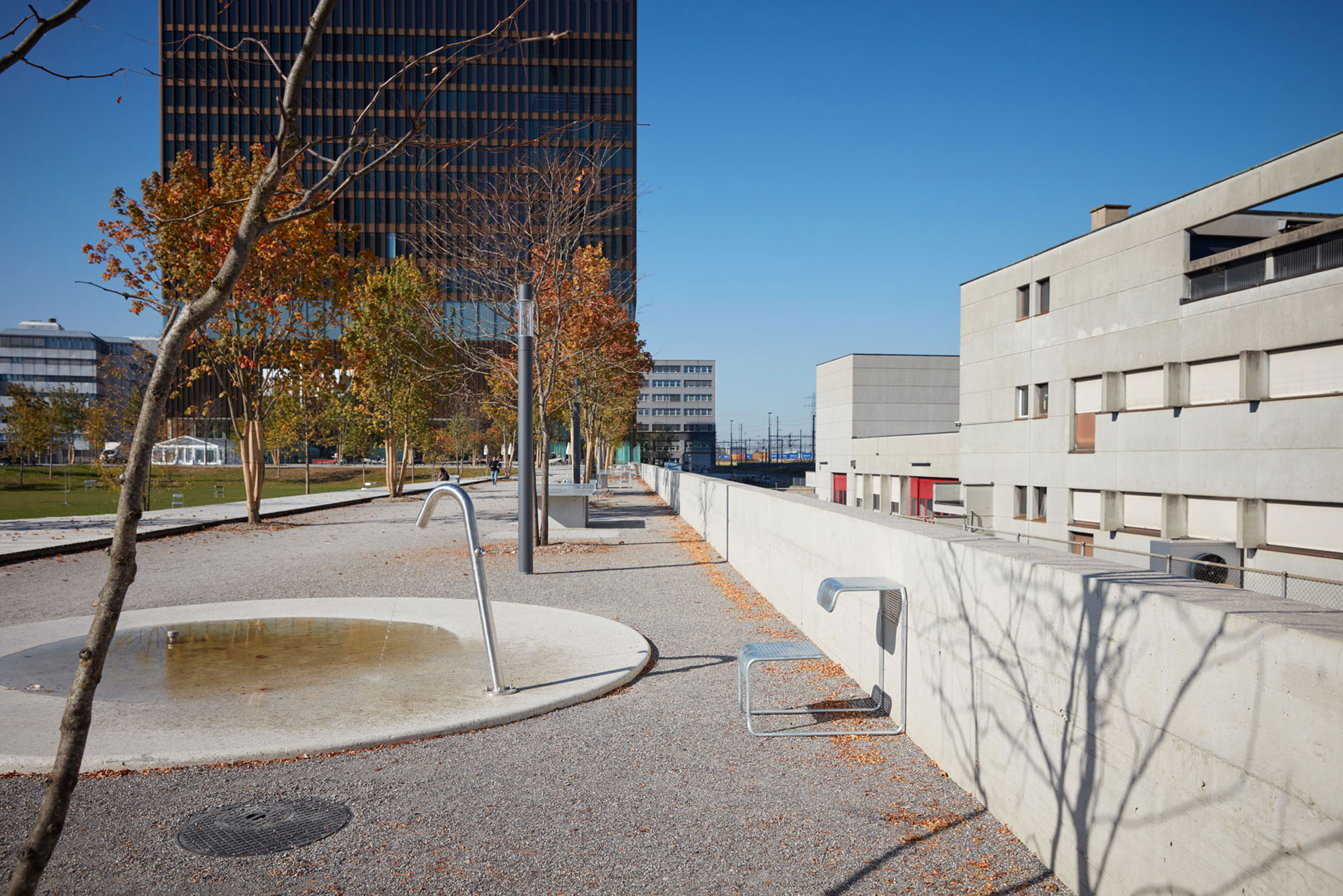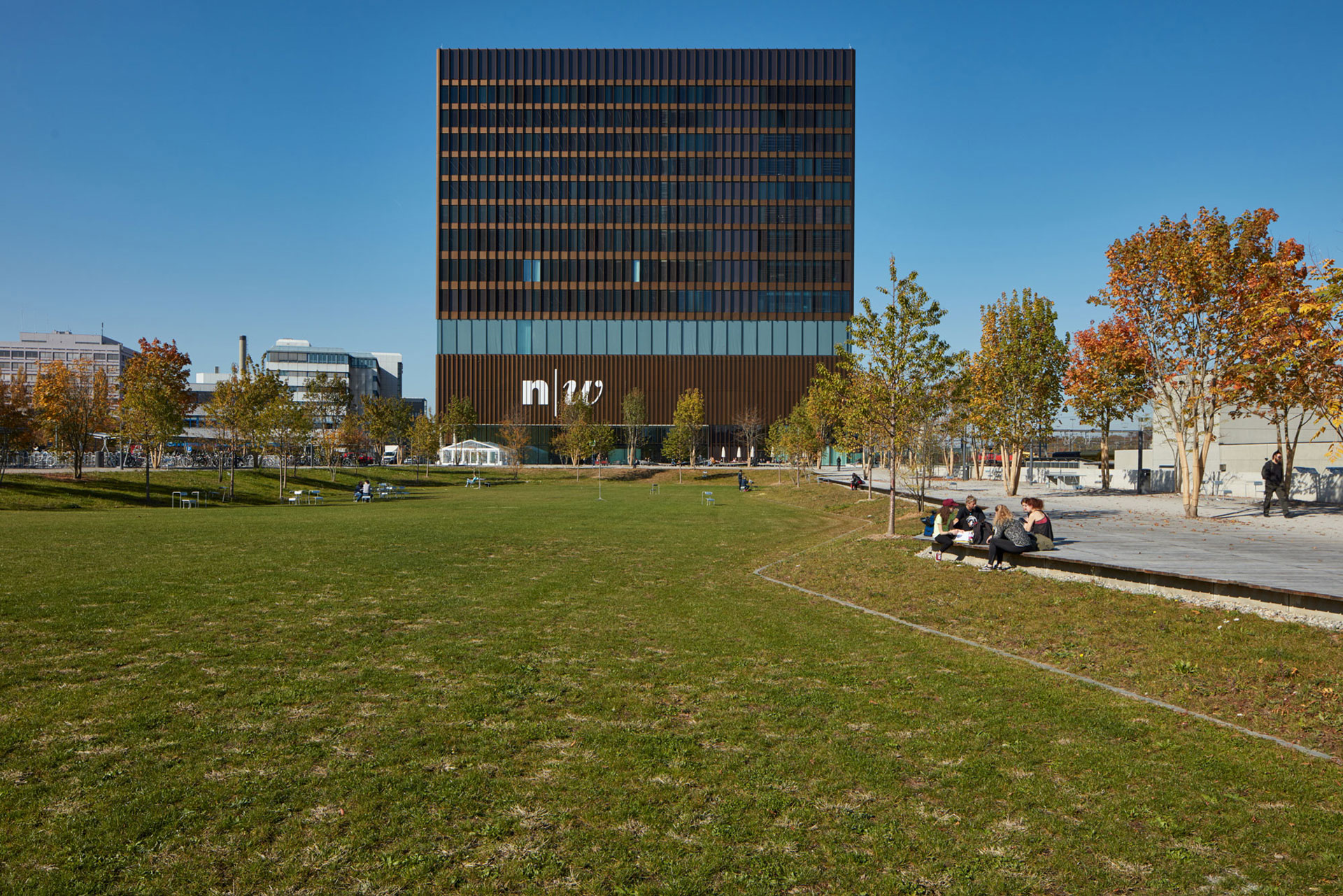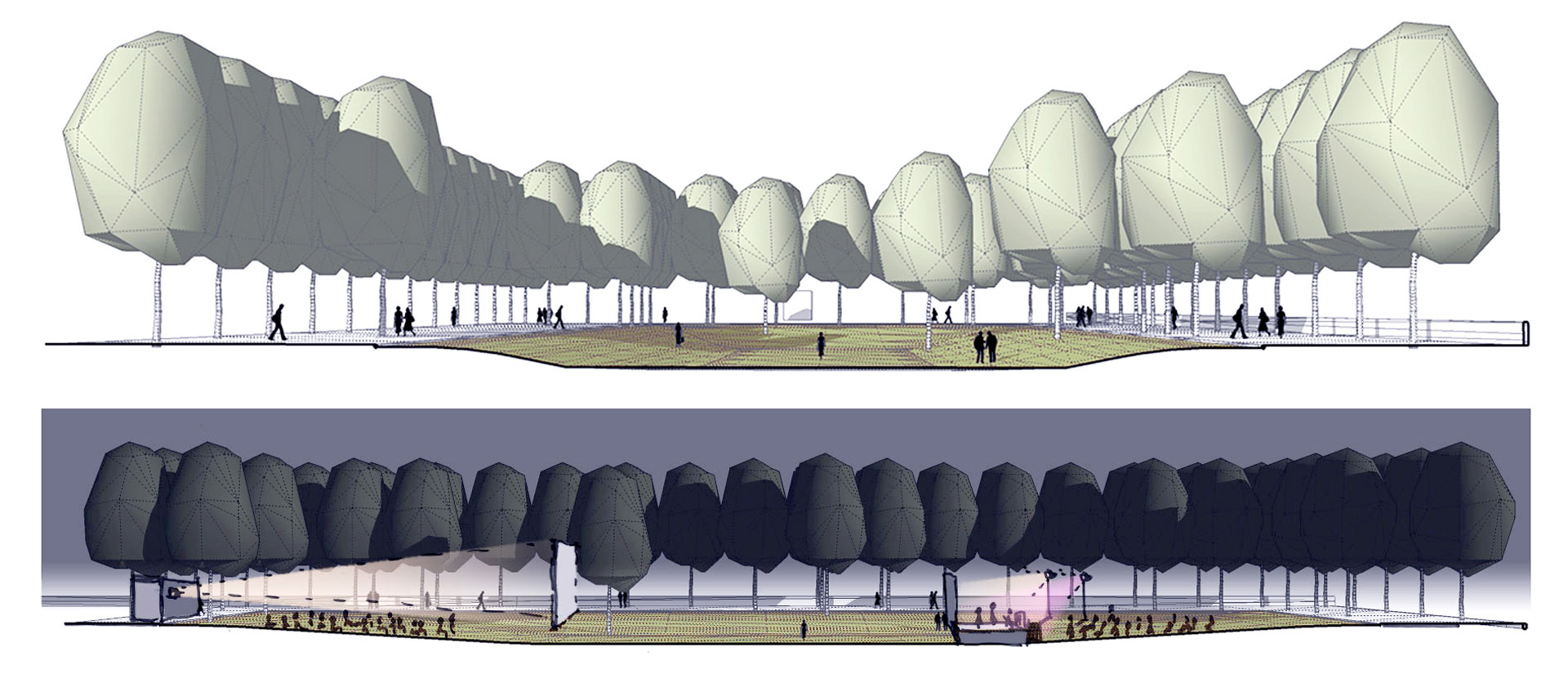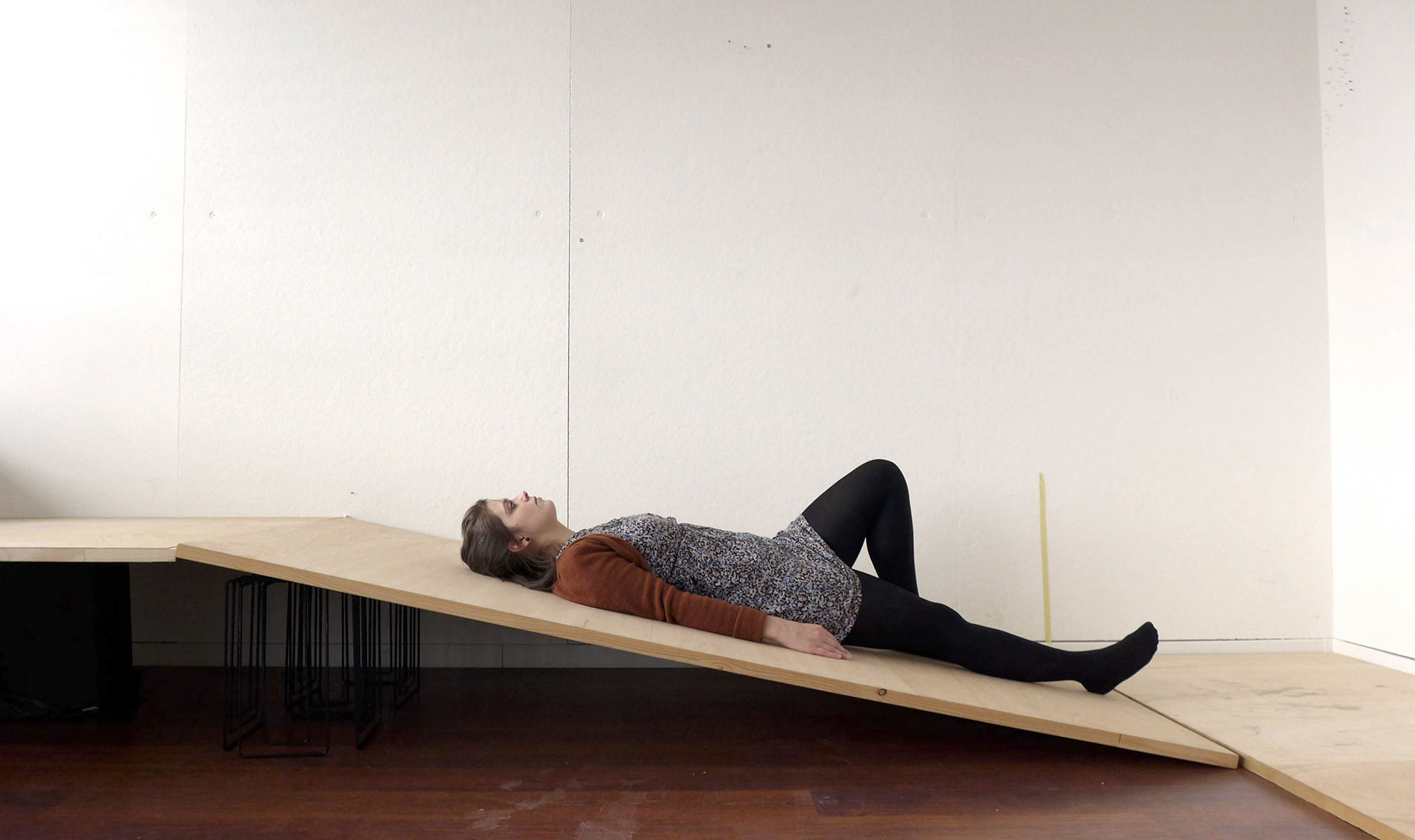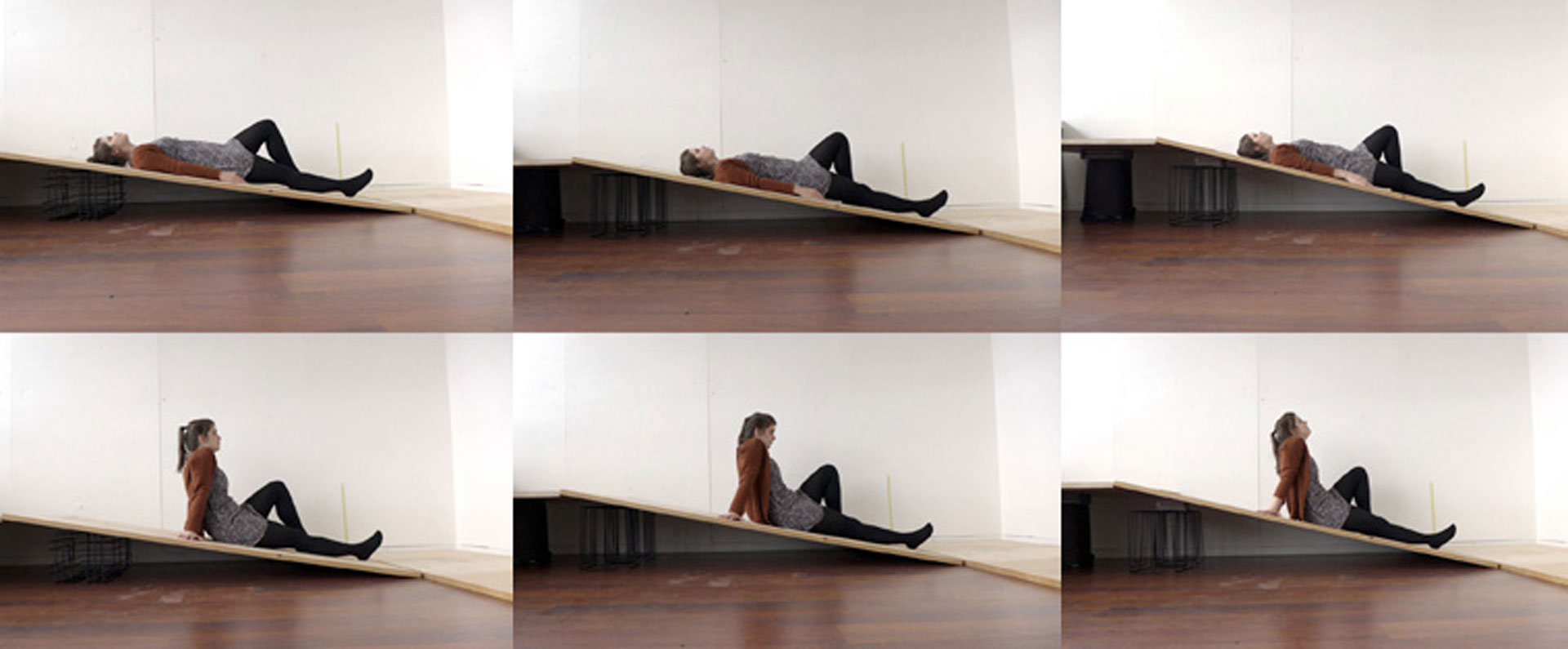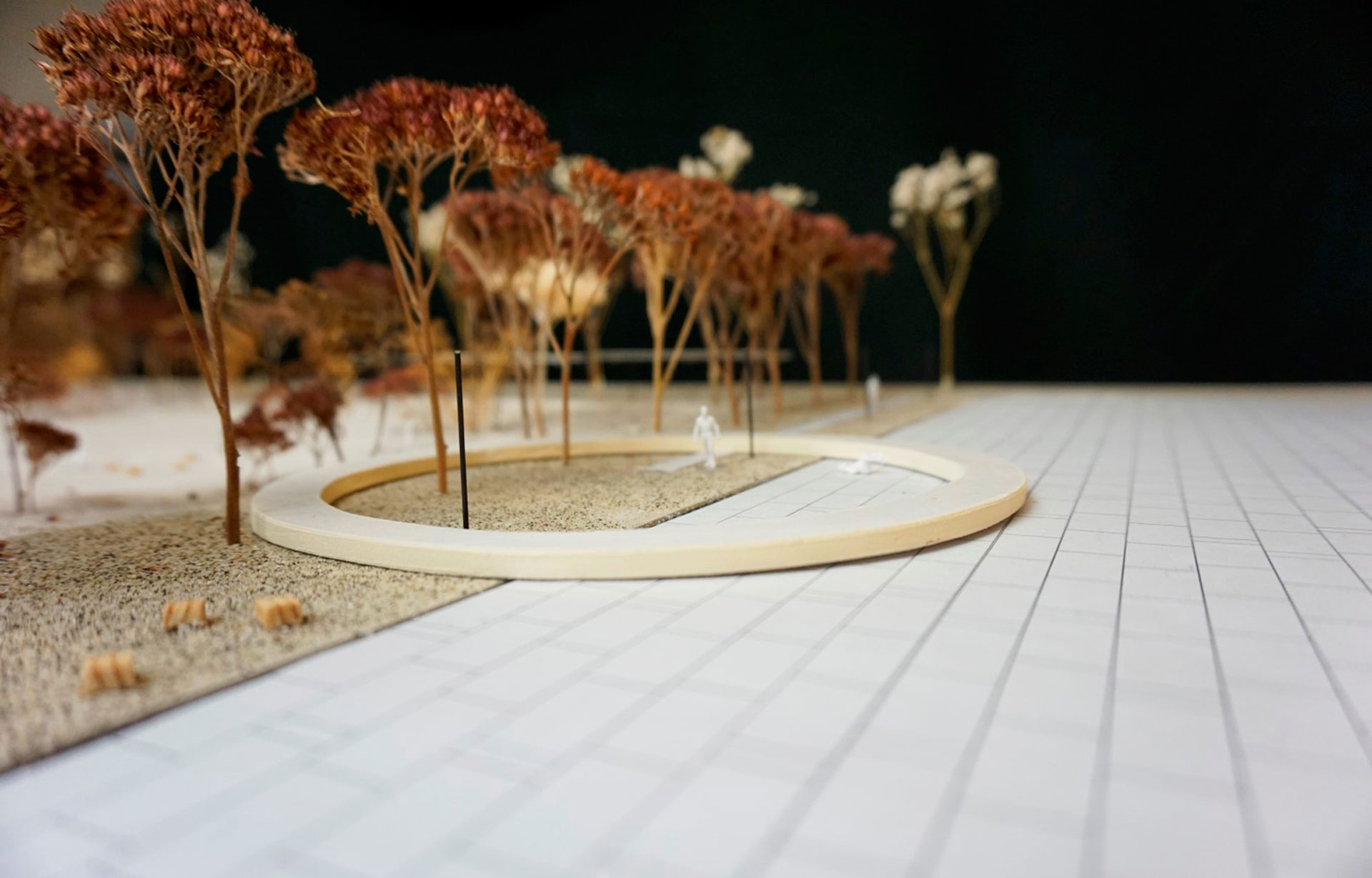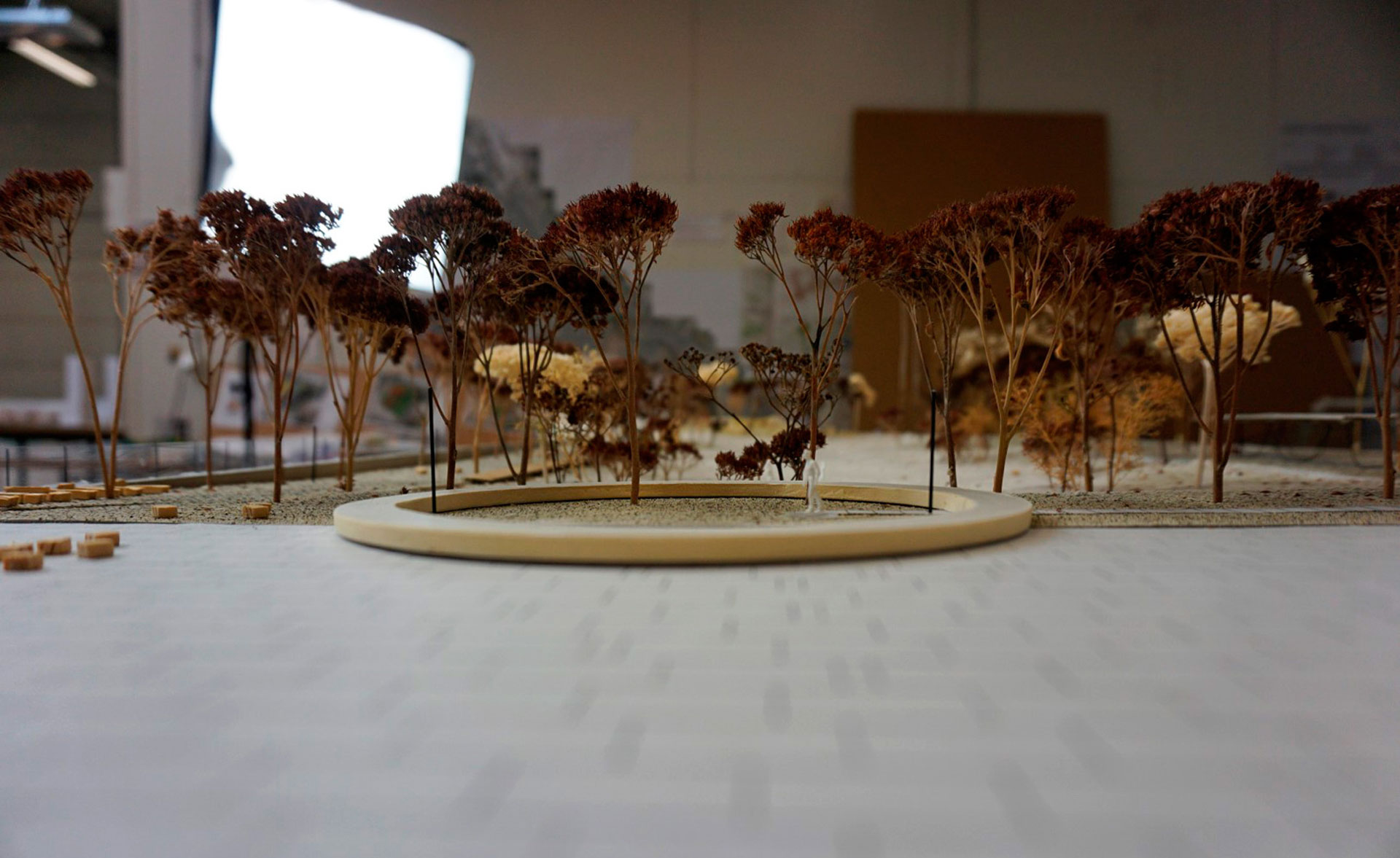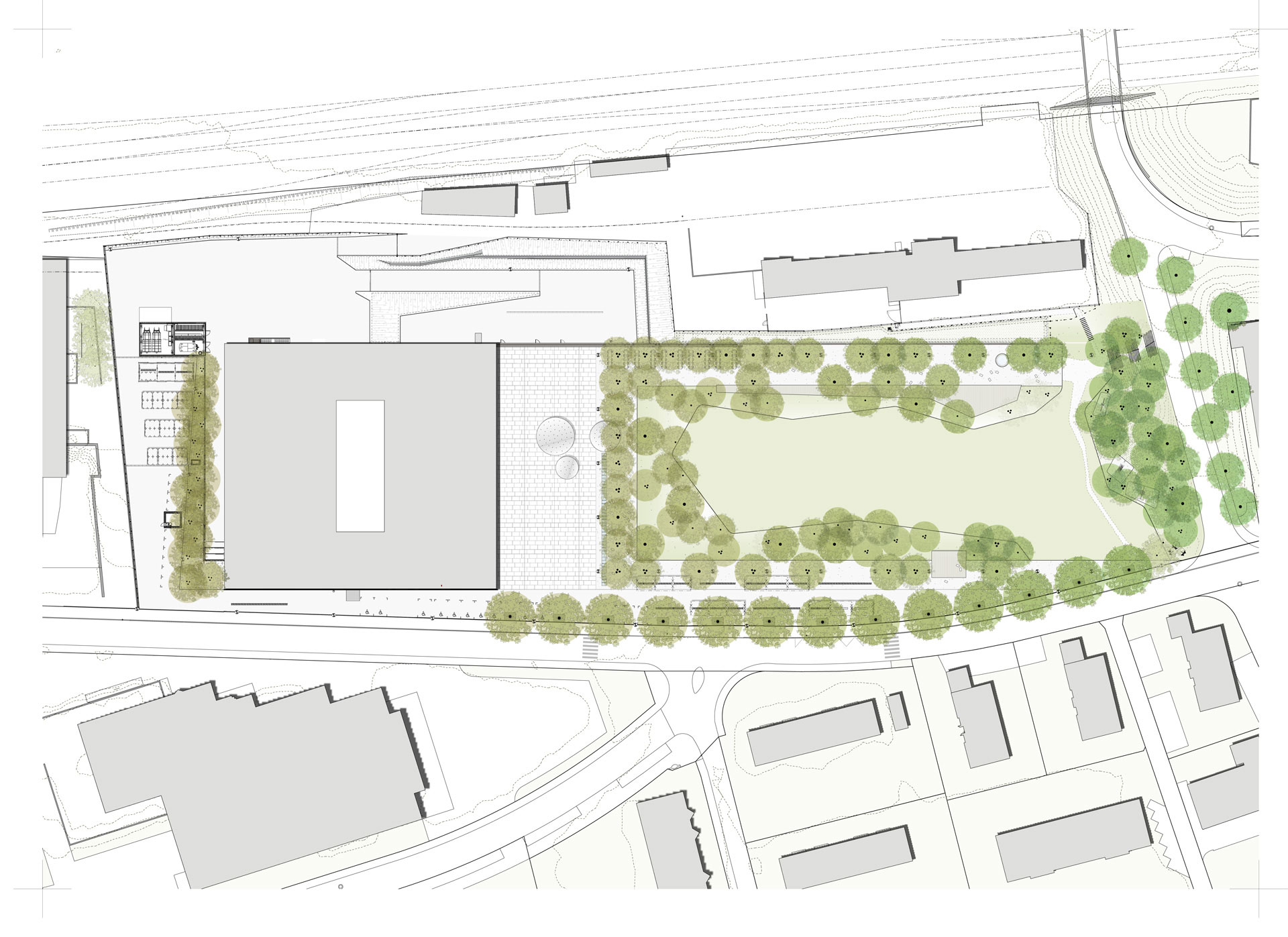The new park facilitates the urbanistic integration of the university building, a freestanding object in a heterogeneous urban context. As envisioned in the master plan, the park acts as the entry foyer of the Polyfeld district and is a space of major relevance to the neighbourhood. At the same time, it represents the university’s main gathering area. Within this dual role, the park achieves autonomy through a change in level toward its surroundings and a unique atmosphere, distinctively avoiding appropriation by the university as a front yard.
A compact ribbon of trees encircling the space, flanked by a retaining wall toward the side of the train tracks, ensures the park’s spatial independence. This frame of trees reinforces the park’s character as a defined space, distinct from the open rail yard and the Hofackerstrasse, and as a spatially tangible counterpart to the university building. The tight positioning of trees dissolves towards the inside, revealing an open, slightly sunken clearing. By lowering the clearing, reinforced by the trees’ vertical layering, the area acquires an almost ethereal, generous and calm atmosphere that enters into dialogue with the open entrance hall of the building.
The outer zone of the ribbon of trees, paved with compacted gravel and asphalt, accommodates specific elements such as timber decks, a playground, a water feature and bicycle shelters, such that the clearing itself remains open, flexible and multifunctional. Between the outer trees and the clearing, sloping meadows with different plantings provide opportunities to sit and relax tucked away from large-scale spaces such as the building and clearing.
Finally, an open square acts as a link between the ensemble of the park and building. Equipped only with symbolic seating platforms, its design is more reduced. As a central meeting place, the square establishes a connection between the ensemble and the adjacent Hofackerstrasse while playing a key role in the development of the Polyfeld district, as it connects the university with the pedestrian and bicycle network and provides access to public transport by means of a new bus stop.
Location: Hofackerstrasse 30, Muttenz, Switzerland
Project phases: Competition 2011, 1st Prize,
Project Development: since 2011
Realisation: 2016 – 2018
Client: Bau- und Umweltschutzdirektion Basel-Landschaft, represented by the Building Department, Liestal
Landscape Architects: Studio Vulkan Landschaftsarchitektur, Zürich
Architects: pool Architekten, Zürich
Construction Management: pool Architekten / Takt Baumanagement AG, Zürich
Photography: Martin Stollenwerk, Studio Vulkan
